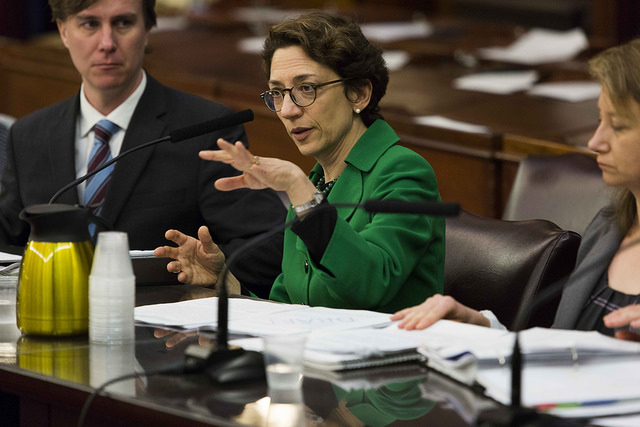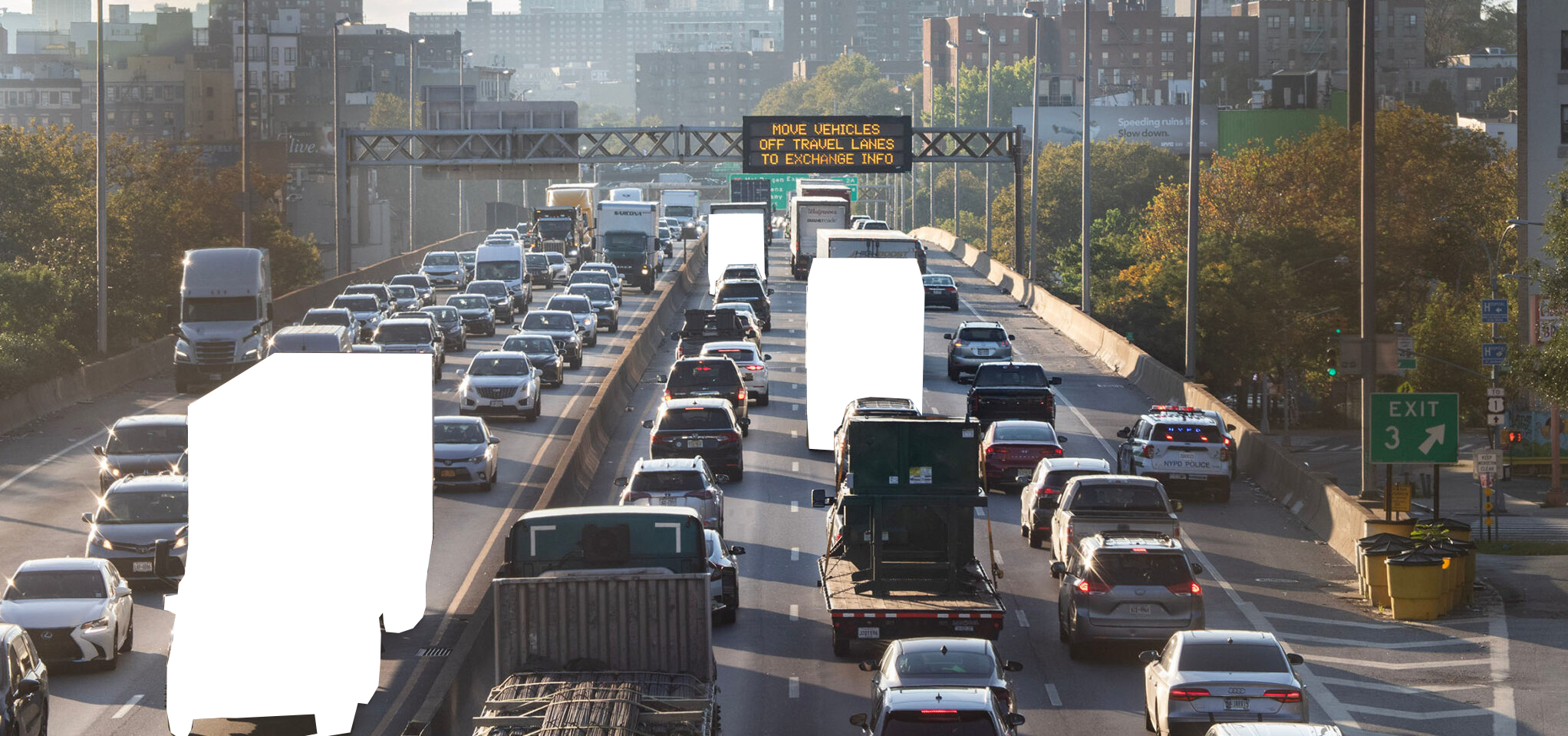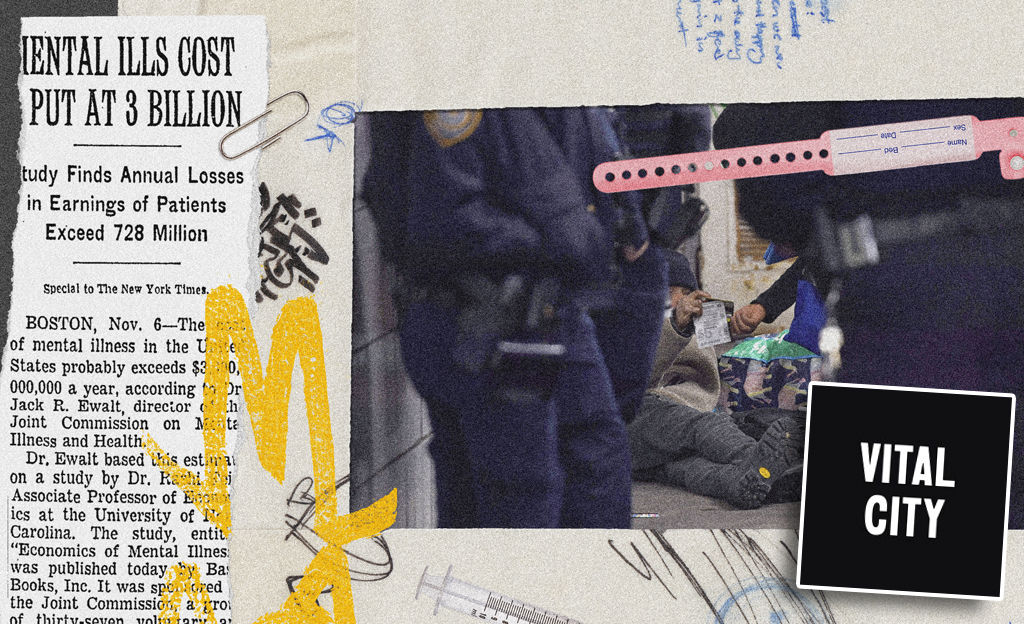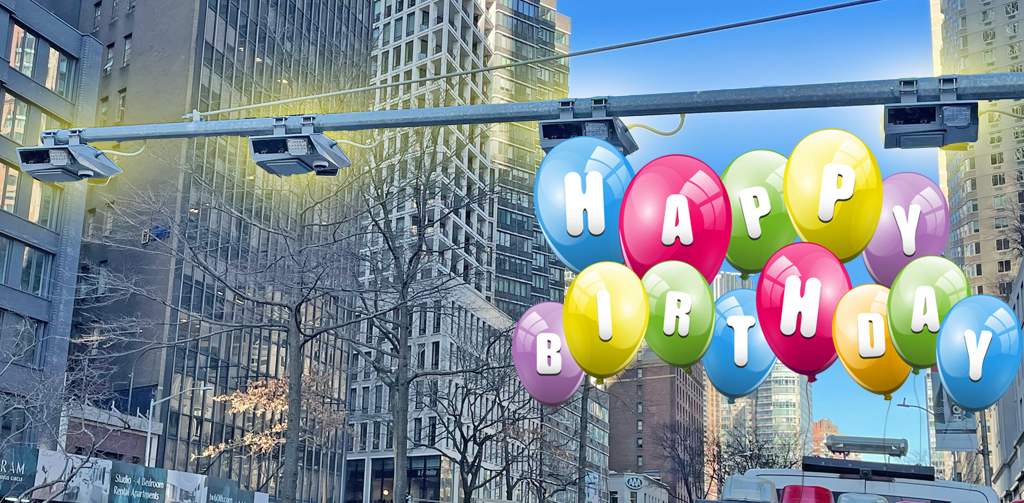With Vision Zero facing setbacks this year — including a rising death toll and three recent lawsuits challenging the city's authority to do basic work to reduce the carnage of the automobile — Streetsblog reached out to Department of Transportation Commissioner Polly Trottenberg, who graciously agreed to pen us an op-ed. What follows are her thoughts on the challenges — and the possibilities — ahead. (The opinions she expresses below are hers, of course, and not necessarily Streetsblog's).
As any regular Streetsblog reader knows, it has been a terrible year on New York City roadways. All of us at the Department of Transportation, many who are regular cyclists and charged with keeping New Yorkers safe on our streets, feel tremendous grief for the lives cut short. It is especially difficult to face such a terrible year after five heartening years of declining fatalities on city streets under Vision Zero.
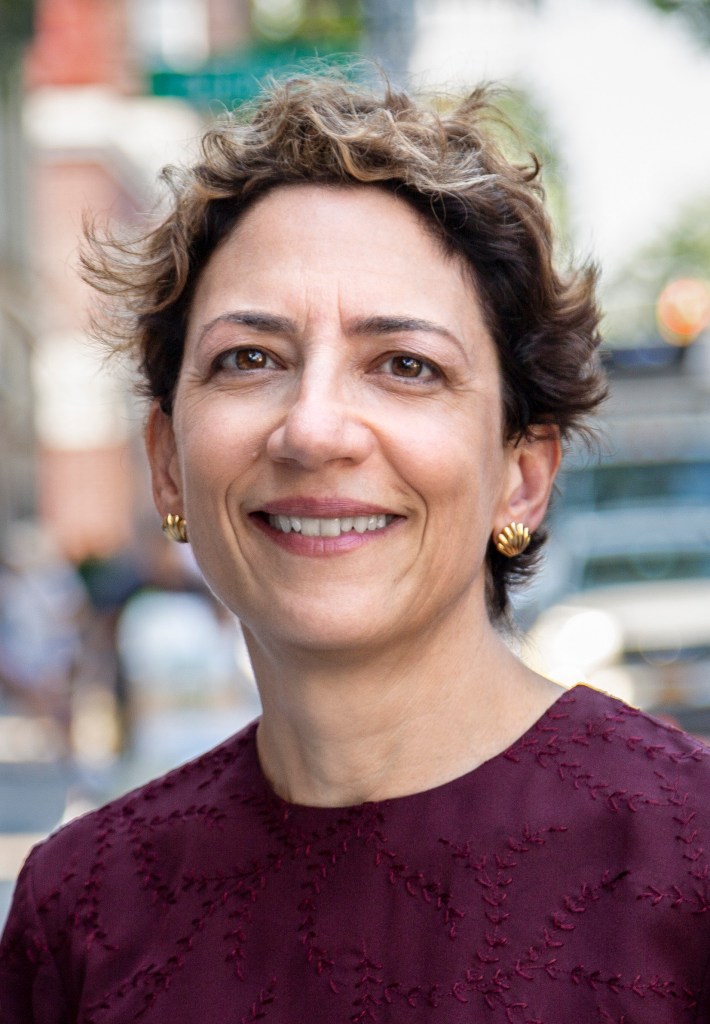
Almost two weeks ago, we began to productively channel some of that emotion with Mayor de Blasio’s release of the Green Wave, an aggressive multi-agency plan to create better conditions for cyclists.
Central to the city’s plan is the vision to create a better-connected protected bike lane network throughout New York City. Almost on cue, last week brought a surprise legal battle in State Supreme Court over the new Central Park West protected bike lane that DOT is currently installing. It was the third time this year that DOT has faced litigation against our roadway safety, dedicated bus lane and protected bike lane projects, resulting in two temporary restraining orders, a very troubling trend.
Proponents of street safety should, of course, cheer our near-term victory on Central Park West, where the judge did deny a restraining order, and allowed DOT to move forward with a protected bike lane that had clear safety benefits and broad community support. But the lawsuit is not yet over: we are back in court on August 20.
This summer has given us new insight into three of the most challenging lessons as we undertake the Green Wave:
1) Vision Zero is a long-term goal: While New York City has seen roadway fatalities drop by almost a third under Vision Zero over five years, progress is not always linear, as we have seen this year. Other cities and countries that embraced Vision Zero have also faced setbacks. Sweden adopted Vision Zero over 20 years ago, saw a surge in fatalities in the late 1990s, but now boasts the lowest traffic fatality rate in the world. Meanwhile, London, among the safest of major Vision Zero cities, has seen a surge in fatalities similar to NYC’s this year — including eight people died in just five days last month.
There will be setbacks, but we must persist in Vision Zero and not succumb to pessimism that may in fact undermine our work. Especially this year, those arguments discourage cycling — and could strengthen the hand of opponents of life-saving street-safety improvements, giving them fodder to question the more than billion dollars this mayor and City Council have invested to create them.
2) New York City, litigation capital of the world? As protected bike lane projects move into new communities throughout the five boroughs, we will also likely need to be prepared for more legal battles.
The city lawyers who emerged successful in Manhattan State Supreme Court last week did an expert job tackling a meritless case, but litigation always brings risks. Complaints about the deliberate speed of our bike, bus and Vision Zero projects are common, but last week we learned that in a courtroom there is absolutely no substitute for a thoughtful and thorough defense based on the work of our world-class planners and engineers. It also helps when the data are undergirded by hard-fought and significant community support, which leads us to…
3) Community Boards – Helpful in Process and Politics: Justice Lynn Kotler noted last week that the Central Park West protected bike lane had been thoroughly reviewed and approved by Manhattan Community Board 7, which she noted was the proper forum to raise such opposition.
Our next focus is on 10 Priority Bicycle Districts in Brooklyn and Queens, where car-ownership and serious cycling crash rates are far higher than on the Upper West Side. We at DOT are under no illusions that the community board approval process in these districts will be as easy.
Nevertheless, I argue strongly that the active engagement of community boards and local elected officials under the de Blasio Administration has been key to the dramatic increase in the pace of PBL production. Over the last three years, we have averaged over 20 miles of protected bike lanes, about four times the Bloomberg Administration average.
Community boards, albeit imperfect, do often serve as proxies for elected officials and their communities. Our neighbors go to these boards to be heard, especially around local transportation issues — and we always gain insight from their deliberations. We are proud to have garnered support for bike lane projects in the great majority of cases where we sought the recommendation of the local community board. And when our engagement does not result in a productive outcome, Mayor de Blasio has authorized the DOT to move ahead with life-saving projects multiple times.
Watching advocates and the city come together last week in common cause around Central Park West was inspiring — and we hope it is the shape of things to come. To make the Green Wave work and increase protected bike lane production by 50 percent in the next two years, we will need our allies to be even more engaged and involved at the community level to meet our ambitious goals, especially in places where cycling is less accepted.
Combining diligent planning and analysis with the hard work of organizing in these new and diverse neighborhoods, we can bring more and safer bike infrastructure to communities throughout the five boroughs that so need it.
Trottenberg is the commissioner of the Department of Transportation, the workplace that won this past May’s TransAlt Bike-to-Work Challenge for most miles biked. An earlier version of this story had the wrong number of fatalities in London. Streetsblog has corrected the number.
